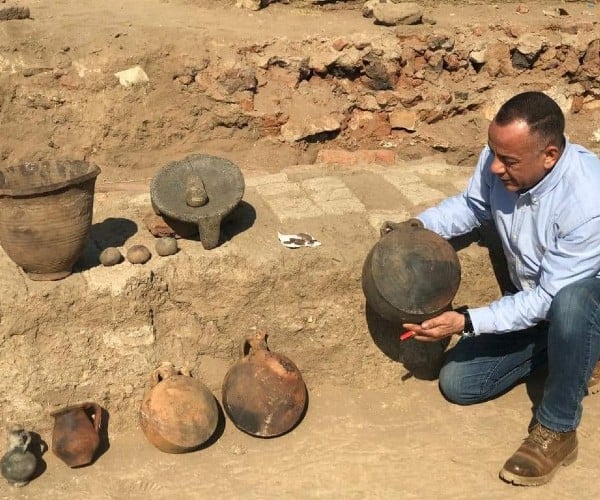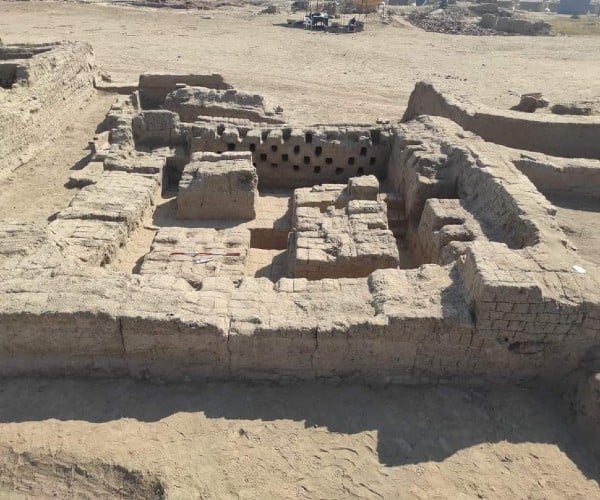Roman city uncovered by archeologists in Luxor
Luxor, which translates as “The Palaces” in Arabic, was formerly known as “The City of Hundred Doors” in ancient times. It is regarded by many as the world’s largest open-air museum due to the presence of some of the most majestic temples on a 417 sq km (161 sq mi) area, including the Valley of the Kings, the Karnak Temple, Queen Hatshepsut Temple, and the Luxor Temple, which houses some of the most extraordinary ruins and artifacts. Luxor is a portion of the ancient city of Thebes and is situated in the southern region of Upper Egypt on the east bank of the Nile River. Luxor served as both the nation’s capital under the New Kingdom and was regarded as a very significant city in ancient Egypt.
Millions of tourists come to the city from around the world to see this amazing beauty. Over 500,000 people still live in the city in an active population who are almost exclusively reliant on tourism. Luxor experiences an extremely hot and sunny environment, with summertime highs of 40 C (104 F) and wintertime lows of 22 C (71.6 F).
What’s the history of Luxor?
The city of Luxor had a strong religious heritage, as evidenced by its history as the city of Amun and, subsequently, in the New Kingdom of Egypt, as the city of the gods, where the Karnak temple serves as the primary site for worship. Each god had a shrine, including Amun-Re, Mut, and many others. The city’s importance increased around the beginning of the 11th dynasty during the early middle kingdom, leading to the new kingdom, where it was made the capital and a focal point for all areas of Ancient Egypt’s politics, religion, and military.

Where’s Luxor now?
Even after the Greek, Roman, Coptic, and Islamic eras arrived in Luxor and numerous churches and mosques were built close to or even on some of the temples, Luxor continued to be a window to Ancient Egyptian History. The city of Luxor and all of its monuments were inducted into the UNESCO World Heritage Site in 1979, and it never ceases to astound us with fresh discoveries.

What’s Luxor’s latest discovery?
In the center of Luxor, a city in southern Egypt, archaeologists from Egypt claimed to have found a 1,800-year-old “complete residential city from the Roman era.”
According to Mostafa Waziri, the head of Egypt’s Supreme Council of Antiquities, the city is the “oldest and most significant city found on the eastern bank of Luxor” and dates to the second and third centuries.
Waziri claimed in a statement that archaeologists found “several residential buildings,” “two pigeon towers” (a building used to keep pigeons or doves), and “several metal workshops.”. Waziri explained that these towers were used as nests for raising carrier pigeons. Messages would subsequently be delivered by the birds to other regions of the Roman Empire.
Researchers discovered a variety of pots, utensils, and “bronze and copper Roman coins” inside the workshops.
It is an uncommon archaeological discovery in Egypt, where excavations are typically of temples and tombs, notably on Luxor’s west bank, where the well-known Valley of the Queens and Valley of the Kings lie.
Authorities declared the discovery of a 3,000-year-old “hidden golden city” on Luxor’s west bank in April 2021. The archaeological team called it “the largest” ancient Egyptian city ever found.
In recent years, Egypt has made several significant archaeological discoveries. Critics claim that the surge of excavations has prioritized discoveries that will attract media attention over the rigorous scholarly investigation.
IMPORTANT NOTICE:
If you are reading this article anywhere other than on A Luxury Travel Blog, then the chances are that this content has been stolen without permission.
Please make a note of the web address above and contact A Luxury Travel Blog to advise them of this issue.
Thank you for your help in combatting content theft.
The discoveries, however, have been a crucial part of Egypt’s efforts to resurrect its essential tourism sector following years of political upheaval as well as following the Covid outbreak.
Sherif Khalil is Owner of Dunes & Beyond. Dunes & Beyond offers luxury tours, Nile cruises and desert safaris in Egypt.
If you would like to be a guest blogger on A Luxury Travel Blog in order to raise your profile, please contact us.
Did you enjoy this article?
Receive similar content direct to your inbox.


Although I’ve visited Luxor twice, I’ve learnt so much about the city from this post. It’s all been very enlightening. It’s making me think of a return visit. Thank you.
What with this latest discovery it shows how Luxor has been such an important city for millennia. How many more discoveries are there yet to be made?
We love the Red Sea resorts. After reading this it makes me think that next time we go to Egypt we ought to arrange a side-trip to Luxor as well.
I never knew that the Romans used carrier pigeons for communication.
When you think of the immense spread of their empire it makes a lot of sense. It’s a long way from Hadrian’s Wall to Luxor. The more I learn about the Romans and their advanced civilisation the more impressed I am.
A few years ago we took a cruise down the Nile and Luxor was simply amazing. Actually the whole trip was one of the best ever. We must have thousands of pictures.
I am always amazed when new discoveries are made – like here and in Ephesus. Thanks for this update.
I visited Luxor but I was not familiar with the history you shared above, it been so interesting thank you sharing with us too.
It’s good to see these discoveries in Luxor, but if someone is interested in seeing Roman history on a larger scale then you should visit Jordan, and if you don’t know about Jordan then please do, as we have a great amount of historical history with a variety of different Eras.
Here are some of the things that you can see:
– Amman Citadel: In the heart of Amman, the capital city of Jordan, the Amman Citadel features Roman ruins alongside earlier Byzantine and Islamic structures. The Temple of Hercules, the Umayyad Palace, and the Roman Theater are notable attractions within the citadel.
– Jerash (Pompei of the East) is known for the ruins of the walled Greco-Roman settlement of Gerasa.
– Umm Qais (Gadara): Situated in northern Jordan near the borders of Syria and Israel, Umm Qais offers stunning views of the Sea of Galilee and the Golan Heights. The site contains ancient Roman theaters, streets, and other ruins.
– Pella (Tal al-Husn): Located in the Jordan Valley, Pella is another Roman archaeological site in Jordan. The ruins showcase a well-preserved theater, temples, houses, and a Byzantine church.
– Ajloun Castle: Though not a Roman site, Ajloun Castle, located northwest of Amman, was built during the Islamic period to protect against Crusader attacks. The castle incorporates ancient Roman elements in its construction and provides panoramic views of the surrounding countryside.
Jordan is filled with historical gems and amazing experiences, dakkak will for sure ease the way for you to see all that